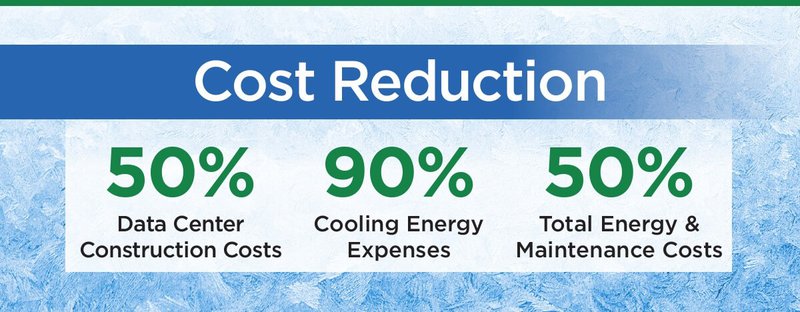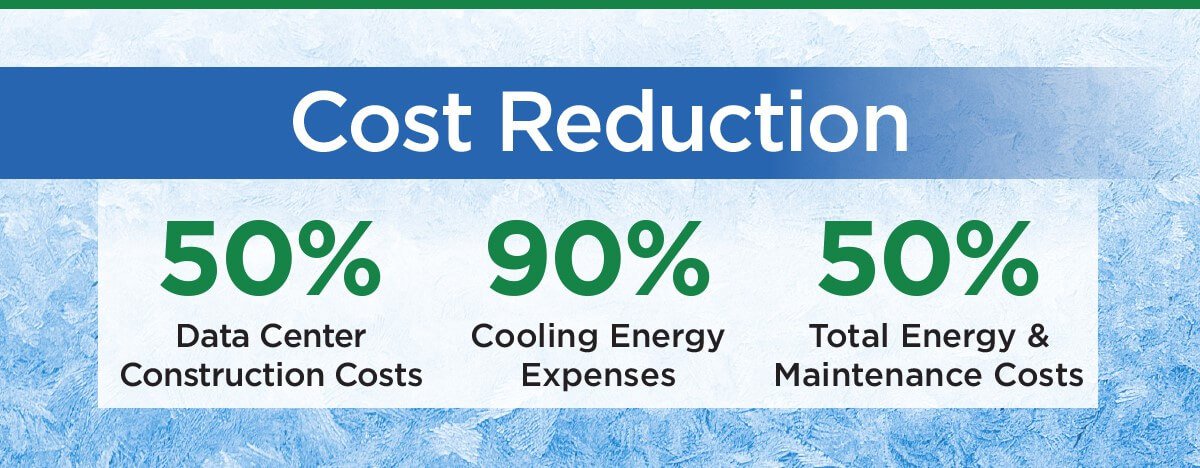Data centers consume substantial electricity, generating high levels of heat as a byproduct. And with server manufacturers packing more CPUs and GPUs into each rack unit, there is growing interest in bringing more immersion cooling to the rack to increase cooling capacity and efficiency.
Cooling systems vary in terms of their complexity and reliability, with potentially negative effects on server hardware. They also differ in terms of efficiency, with the less efficient cooling systems using an astonishing 40% of total data center power. Datacenter cooling has come a long way with major performance breakthroughs over the last several years. Cooling has to work around the clock to protect mission-critical equipment and data. The effective selection and deployment of a cooling solution affect the stability of the entire operation. Regardless of which approach you to take, cooling system maintenance can increase the lifespan and performance of your data center.
That said, people, generally, believe they understand technical issues and applications. Datacenter cooling is no exception with a number of myths and misconceptions percolating in the industry and beyond. Many of these are driven by the cost and safety aspects of cooling methods. As such, you’ll want as much accurate information as possible, so you can make smart and informed choices for your data center. After all, millions of dollars are at stake and your workers’ safety depends on it.
Myth #1: Cooling for Data Centers Is Expensive
On the contrary, cooling systems for data centers have become quite affordable. While the exact cost depends on the specific cooling configuration, prices have dropped sharply in recent years. For example, the ICEraQ immersion cooling solution developed by GRC has enabled many to build data centers for as much as 60% less than traditional air-cooled operations. Plus, it continuously provides significant cost savings on energy and maintenance.

This myth, however, has a grain of truth in it in that data center cooling can be expensive… if you’re toiling with traditional air cooling systems, that is. It’s an electricity guzzler which means bigger bills. Immersion cooling is far more efficient, and because electricity is not a major requirement, it’s far less expensive.
Not only is immersion cooling itself less expensive, it also cuts the total cost of building a data center dramatically. Without the extensive and complex infrastructure necessary for air cooling — raised floors, chillers, air handlers, humidity controls, backup generators, UPSs, batteries, and more — immersion cooling like GRC’s saves you a fortune.
Liquid coolers are also modular, making expansion as well as building and running the data center affordable. And as the technology makes rapid strides, the higher density of computer systems yields even lower CAPEX, OPEX, and total ownership costs.
Myth #2: Air-Cooling Is the Only Way to Go
Far from it, air cooling is no longer the only way to regulate the excessively high temperatures of data centers. Immersion cooling options are far more effective: they use coolants that are safe to immerse electronics in, along with other technologies to maintain racks and racks of servers at a fraction of the cost of deploying air cooling systems.
Immersion cooling systems are easy to use, allowing hot-swapping on the racks and straightforward maintenance. Consequently, servers from many large manufacturers like Dell and IBM work with GRC’s ICEraQ immersion cooling system. GRC’s usefulness does not stop there, and this proven technology has also been deployed by numerous international corporations and US government agencies (military and intelligence) as well as search engine firms and telecom operators.
Immersion cooling offers exceptional functionality for high-density servers running at over 100 kilowatts per rack, applications that have raised the currency of this technology. And because liquid cooling supports any architecture, data centers of all sorts and sizes become simpler to set up and therefore more affordable to manage, from start to finish. While air-conditioning continues to be a great solution for comfort cooling, this 100-year-old technology has outlived its usefulness when it comes to cooling the data center.
Myth #3: Liquid Immersion Cooling Is Unsafe
Immersion cooling is safe, as the immersion technology does NOT use water, but rather a special liquid that does not conduct electricity. GRC, for example, utilizes high-performance, synthetic ElectroSafe® liquid immersion coolants. Multiple manufacturers now make synthetic hydrocarbons that resemble mineral oil. They are non-toxic, non-conductive, biodegradable, and fully recyclable. About as safe as it gets!
Immersion cooling is not only safe, but it also offers additional protection benefits over air cooling. When servers are submerged in the special fluid, there are guards against dust and moisture that would interfere with processing. The liquid also defends against oxygen, vibrations, and hot spots. Together, these threats account for many of the causes of electronics failure.
Immersion cooling technology has been proven to be safe for servers, people, and the environment. The electrically non-conductive liquid does not pose electrocution risks. Also, multiple redundant systems protect against any leaks. If an issue arises in the cooler, negative pressure systems ensure that air rather than liquid coolant fills the volume.
With the unmatched safety profile of immersion cooling, you can install it in any data center, including edge data centers and locations with harsh conditions. For your teams and the environment, immersion cooling offers compelling advantages. Put simply – Immersion cooling makes your data center safer, not less safe.
Myth #4: Liquid AND Air Cooling Systems Are Better Used Together
While it’s technically possible to run a hybrid system that combines liquid and air cooling, generally it makes more sense just to use liquid. With immersion cooling—the most efficient approach to immersion cooling —you eliminate air processing entirely.

Immersion cooling systems do away with the high-RPM fans, filters, and other components of air cooling that need extensive maintenance. As such, the maintenance needs of immersion cooling are much smaller compared to air cooling systems.
Using immersion cooling alone can prevent many issues facing air cooling systems. For instance, you can put an end to bacteria, mold, and other obstructions. No more worries about refrigerant leaking or drains clogging or other electrical components that liquid coolers don’t have. A liquid-only system is simpler to implement than a hybrid system, making it more convenient and reliable.
By switching to liquid-only cooling, you wipe out the need for all that HVAC infrastructure, freeing up data center space that was dedicated to generators, chillers, and other equipment. You can then use the available space to expand compute capacity, or repurpose it for personnel use or any other purpose you want.
Myth #5: Immersion Cooling Causes Corrosion
This myth is false, as immersion cooling protects against corrosion rather than causing it. The liquid, which is not water but rather a synthetic hydrocarbon fluid, keeps out moisture to prevent corrosion.
- A system like GRC’s ICEraQ is engineered to last as long as the data center, which can extend beyond fifteen years. Engineers select materials that complement the liquids involved. System designers factor insulation, coatings, and other protective measures that make immersion cooling unsusceptible to corrosion.
Immersion cooling is designed to function safely and without causing corrosion. Immersion cooling, in fact, mitigates against the corrosion that occurs in air cooling systems!
Get The Latest in Data Center Cooling Technologies With GRC
With increasing amounts of computing power being crammed into servers supporting artificial intelligence and other processing-intensive applications, rack power requirements have exceeded 20 kilowatts (kW) in a large number of facilities.
As high-power racks become more prevalent, air cooling is becoming increasingly unsustainable from an economic and environmental perspective. New technologies have changed, rather, transformed the game and modern applications are pushing the boundaries well beyond the capabilities of air cooling. By leveraging the high thermal transfer properties of fluids, immersion cooling is fast becoming an energy-efficient, energy-saving, cost-effective solution for cooling high-density racks.
Numerous myths have gushed up around immersion cooling for data centers, as is often the case with any revolutionary new technology. If we examine the data, however, we find that immersion cooling offers a safe, non-corrosive method that costs much less, takes less space, produces less noise.
Bringing immersion cooling solutions to the rack can be a complicated process. Finding the right partner is essential to ensuring success. Looking to transition to liquid immersion cooling for data center operation? Look no further than GRC—The Immersion Cooling Authority—that is shattering barriers of heat, space, power, budget, and sustainability.
Get in touch with the GRC team today and find out more about our single-phase liquid immersion cooling technology that offers virtually unlimited capacity that’ll save you money while enhancing your data center’s performance and reliability… And that’s no myth!




